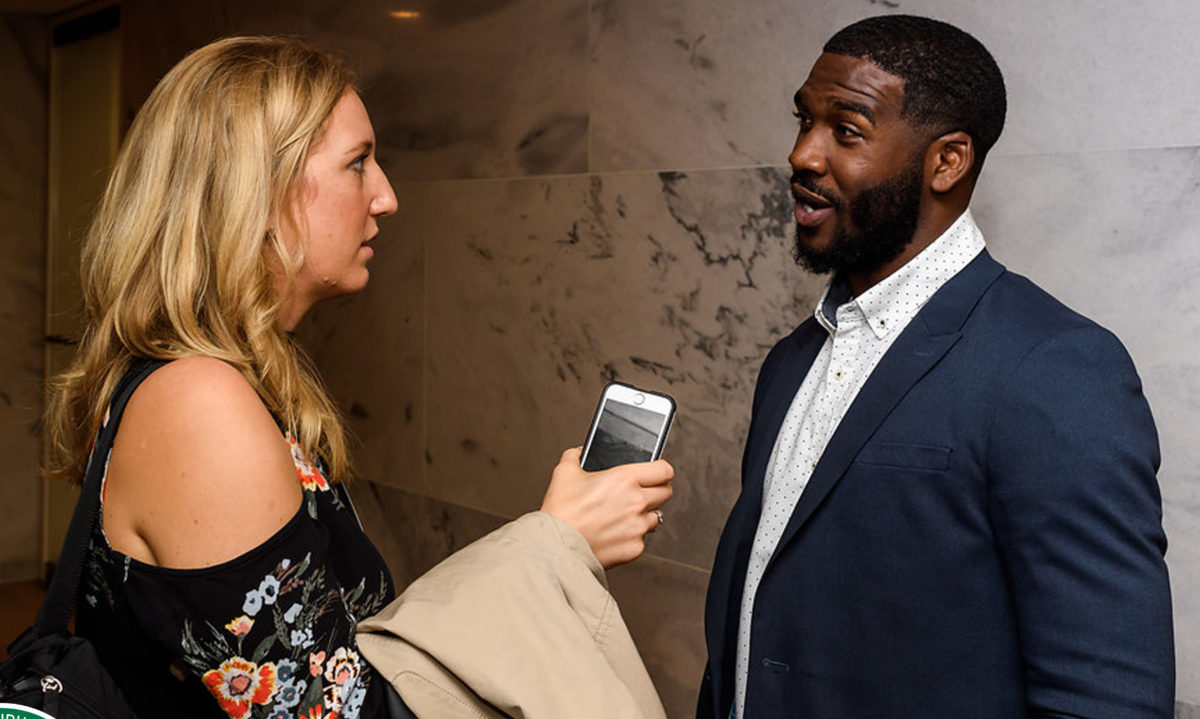by Carol Ruiz, Higher Ground Agency
In order to run a successful PR campaign or build your own PR department you will need a set of tools that you can pull from again and again. Here are key strategies you need to tackle in order to build a successful toolkit.
Define your story. Story telling is at the heart of every PR campaign and will drive everything you do. As you know, cannabis is on fire wth new products introduced everyday. The ones who tell their story in a compelling way are the ones that will stand out. Ask yourself: how is your company, product, or service better or different than any other on the market? Is your product the first of its kind? Are you a bootstrap entrepreneur? Have you been a cannabis activist since the 90s? Does your company help people in need? Your story will be the DNA that is weaved throughout your toolkit, from your elevator speech to speaking to media.
Develop a media list. This list should have the following components: reporters’ names, titles, contact information, what they cover on their “beat,” —and this one is important—what you have pitched them and when you have pitched them. This is your guide to keeping organized and remembering who you’ve contacted. Cannabis beats are starting to fragment now into silos like “business,” “products,” and “lifestyles.” Don’t make the mistake of sending a business-focused press release to a lifestyle reporter. It’ll be ignored. There are companies like Meltwater that provide a comprehensive and constantly updated media data base. While there is a yearly subscription, it will help save an immense amount of time since pulling together a media list is time intensive.
Develop a media kit. When sending out a press release or pitching media, you should provide them with everything they need to run your news. Include facts about company executives and leaders as well as their headshots, a company overview, press releases, and compelling photos and images of your product or service. The goal of a media kit is to make it easy for reporters to understand the who, what, why, when and how of your company and its unique story. If reporters are provided with all this information (most importantly high-quality images and photography) at their fingertips, your chances of coverage increase. Your media kit should be online, digital, and easy to access.
Develop a press release. This could be its own blog but for now here are the key steps. Keep it simple. Stick to the who, what, where, when and how. Write a compelling headline that helps your news stand out and write the body of the release in the inverted pyramid style, meaning, have your most important information in the lead paragraph then include less important news below. (Industry secret: Most reporters will stop reading after the first paragraph. Make it a good one!) Write your press release in Associated Press (AP) style. This is the language that reporters understand and will recognize when they see it. Be upfront and transparent, clear and concise. Reporters are too busy to dig for the news in your release so keeping it simple will help you get more coverage.
Distributing your press release. Using your media list, send one email at a time (never do a mass, BCC: pitch), customize your email and make it personal. The goal here is to build relationships with reporters, not spam them. It’s important to follow up after sending your release but don’t make yourself a pest as reporters are overworked, cover myriad beats, and are always under deadline. Always. If you want a broader approach distribute your press release through a wire service. The huge advantage here is the breadth of media outlets your press release will get in front of, however, you won’t get that personal touch point. Wire services can be expensive but depending on the scope of your news, entirely worth it.
Leverage social media. Again, this could be its own post, but the short take is: use your social media channels (Facebook, Twitter, Instagram, LinkedIn) to announce your news. Since a press release is written in a specific style for reporters, feel free to re-craft for your social audience in a friendlier, accessible voice. Reach out to reporters on Twitter with your news (with a big caveat: some do and some do not like to be pitched on social media and in public; do your research before tweeting a pitch). Lastly, when and if you get any coverage, you must post it on your social media pages. It’s a powerful way to increase your visibility, build credibility, and connect with new followers.
 Carol Ruiz is co-founder and Partner of Higher Ground PR and Marketing. Janitor, construction crew clean up, waitress, documentary filmmaker, adjunct professor… just a few of the paths Carol Ruiz walked before finally finding what she would do for the rest of her life.
Carol Ruiz is co-founder and Partner of Higher Ground PR and Marketing. Janitor, construction crew clean up, waitress, documentary filmmaker, adjunct professor… just a few of the paths Carol Ruiz walked before finally finding what she would do for the rest of her life.
At these former gigs, as founder of NewGround PR & Marketing (a highly regarded agency in the real estate space), at Higher Ground, and at dinner tables the world over, Carol is a storyteller. Storytelling being the heart and soul of public relations, it’s no surprise that Carol was drawn to the world of PR.


Follow NCIA
Newsletter
Facebook
Twitter
LinkedIn
Instagram
–